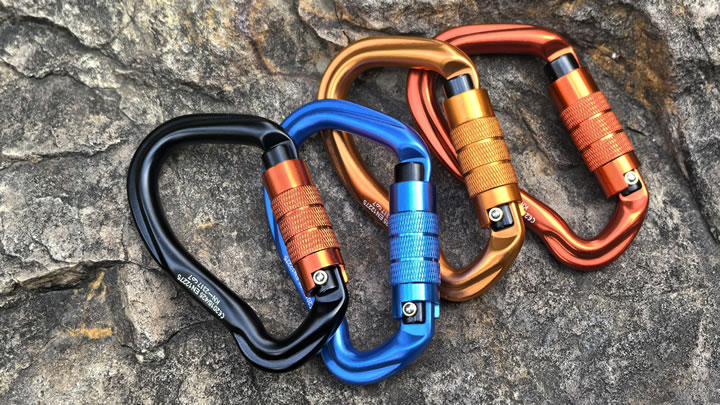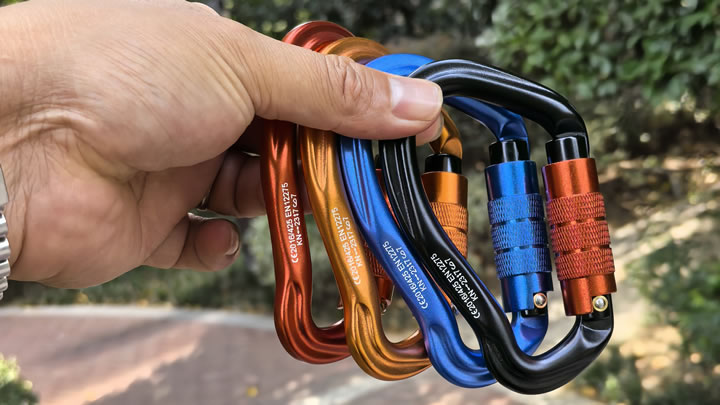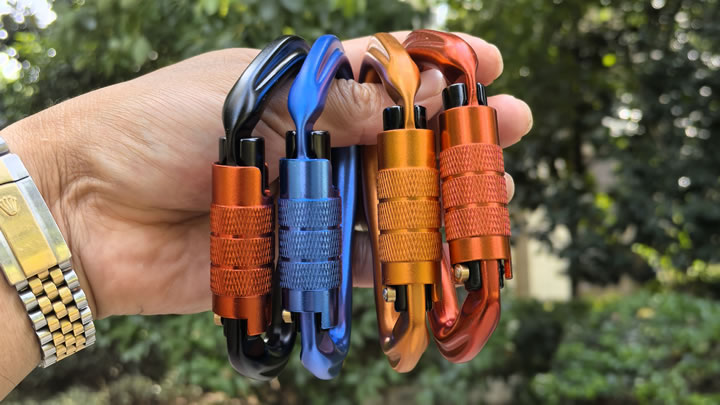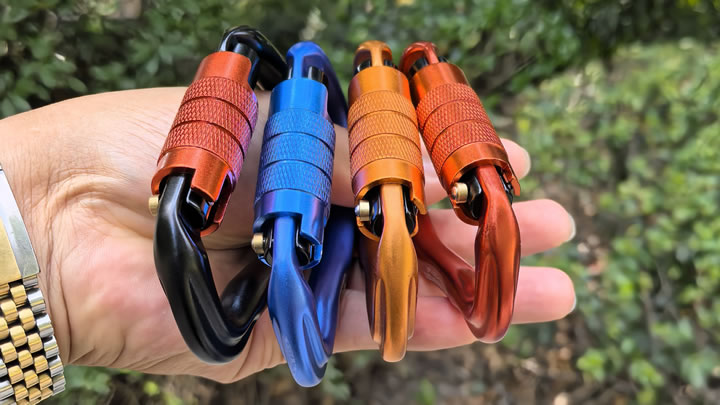Can a climbing swivel ring prevent rope twists?
Rope twists are more than a nuisance in vertical activities—they can lead to dangerous snags, uneven wear, and sudden system failures. Climbers, arborists, and rescue teams face this challenge daily, especially during dynamic movements or multi-directional rigging. Enter the climbing swivel ring: a compact yet powerful tool designed to tackle torque head-on. But does it truly prevent rope twists? Let’s dive into the mechanics, applications, and evidence behind this critical safety device.

The Science of Rope Twists
Ropes twist naturally due to:
- Friction: Rubbing against rock, gear, or other ropes.
- Load Shifts: Uneven weight distribution during hauling or lifting.
- Movement: Rotational forces from ascending, rappelling, or traversing.
Left unchecked, twists create kinks, reduce rope strength, and increase the risk of jams mid-operation. In worst-case scenarios, they destabilize rigging systems or delay rescues.
How a Swivel Ring Solves the Problem
A climbing swivel ring features a rotating mechanism (often with ball bearings) that allows connected gear—carabiners, pulleys, or ropes—to spin freely. Here’s how it neutralizes twists:
- Dynamic Rotation: The swivel absorbs rotational energy, letting ropes untwist naturally under load.
- Friction Reduction: Smooth pivoting minimizes contact points between moving parts, lowering heat and wear.
- Directional Flexibility: Adjusts to multi-anchor systems without binding, crucial for traverses or redirects.
This combination ensures ropes remain tangle-free, even during complex maneuvers.
Real-World Applications
- Rock Climbing:Prevents “rope drag” on zigzagging routes by allowing the rope to rotate with each anchor redirection.Critical for aid climbing or hauling heavy gear bags up big walls.
- Arboriculture:Lets rigging lines pivot smoothly when lowering cut branches, avoiding sudden twists that could snap ropes.
- Rescue Operations:Ensures patient-lifting systems rotate without entanglement, maintaining stability during high-stress evacuations.
Limitations and Misconceptions
While swivel rings excel at managing twists, they aren’t a universal fix:
- Static Systems: In non-moving setups (e.g., fixed anchors), swivels offer little benefit.
- Overload Risks: Exceeding the swivel’s load capacity can lock the rotation, defeating its purpose.
- Maintenance Needs: Dirt or corrosion in the bearings can impede rotation, requiring regular cleaning.
Choosing the Right Swivel Ring
To maximize twist prevention:
- Opt for Ball Bearings: Models with sealed bearings handle high loads and rotate smoothly.
- Check Certifications: UIAA or CE marks guarantee tested strength and durability.
- Match Load Ratings: Ensure the swivel’s capacity (e.g., 25–50 kN) suits your activity.
Pro Tips for Effective Use
- Position Strategically: Attach the swivel close to the load source (e.g., harness belay loop) for optimal torque control.
- Pair with a Pulley: Combine with a redirect pulley to manage both direction changes and twists.
- Lubricate Sparingly: Use dry lubricants on bearings to avoid attracting dirt.
The Verdict
Yes, a climbing swivel ring can prevent rope twists—if used correctly. Its rotating mechanism is engineered to neutralize torque, reduce friction, and adapt to dynamic forces. However, success depends on selecting the right model, maintaining it rigorously, and integrating it into systems appropriately. For climbers navigating serpentine routes, arborists managing unpredictable loads, or rescuers prioritizing speed and safety, a swivel ring isn’t just helpful—it’s a game-changer.
Final Note: Always test your setup in low-risk scenarios first. A swivel ring is only as reliable as the knowledge behind its use.






